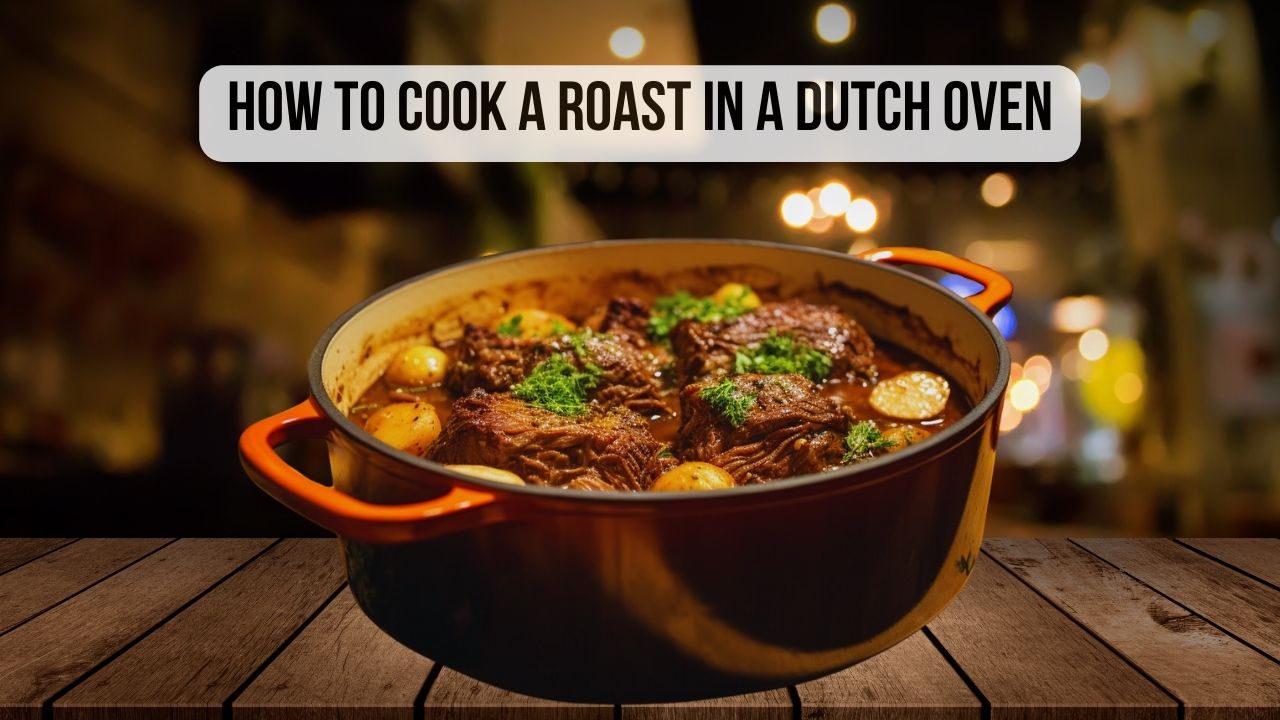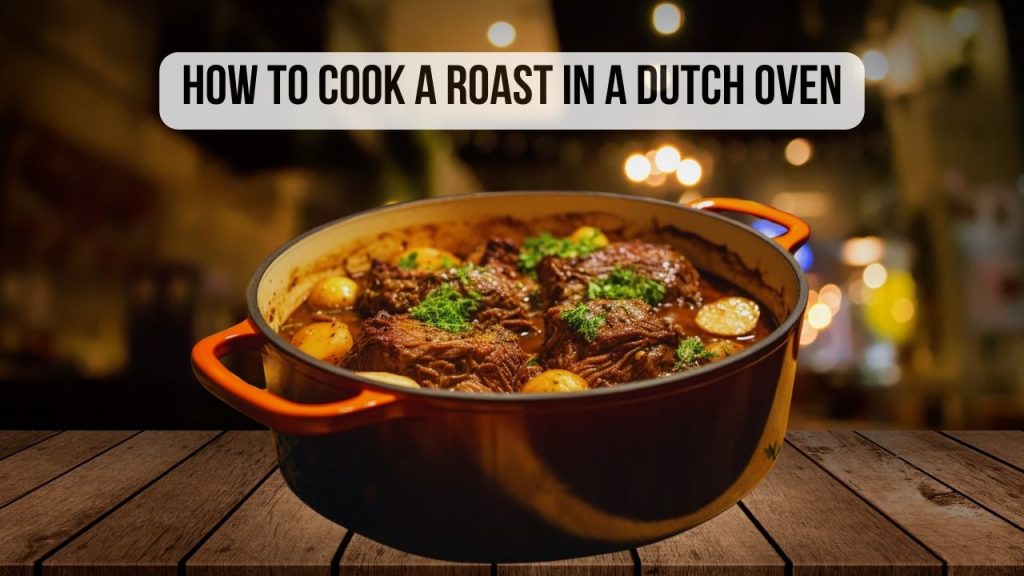
For ten years, I’ve had the pleasure of crafting numerous dishes that celebrate the art of slow cooking. Today, I’m excited to share one of my all-time favorites: the Dutch oven pot roast.
This classic dish is not only a comfort food but also a showcase of the magic that happens when you combine quality ingredients and a suitable cooking vessel. So, roll up your sleeves, and let’s dive into creating Dutch oven pot roast perfection.
What is a Pot Roast?
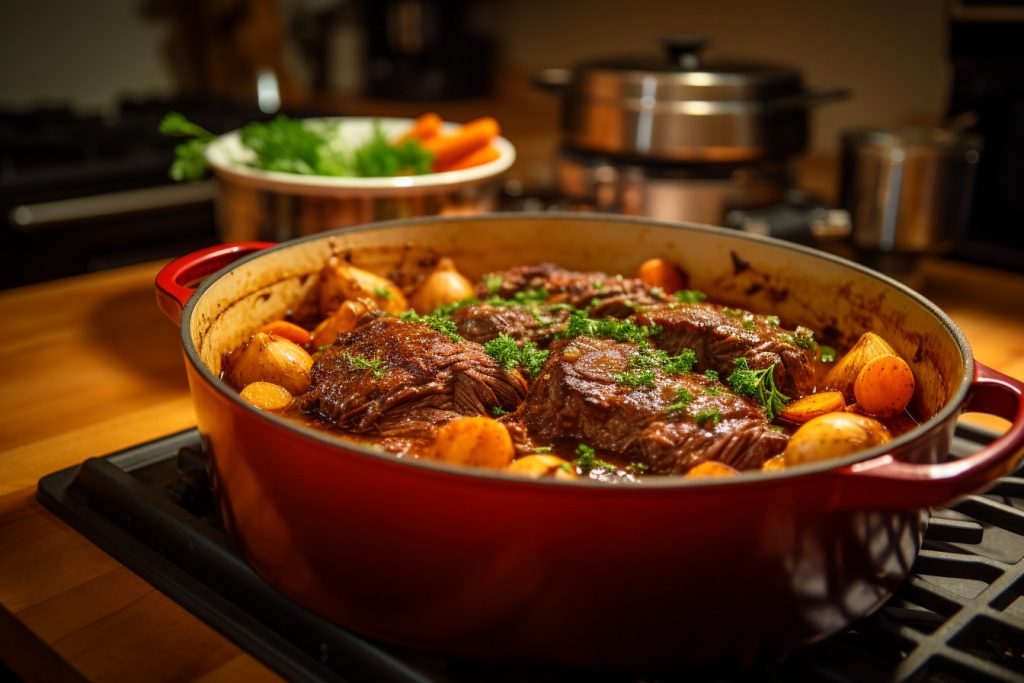
A pot roast is a dish made by slow-cooking tough cuts of meat in a liquid until they become tender and flavorful. This process breaks down the collagen in the meat, which results in a succulent and melt-in-your-mouth texture.
What is the Best Meat for Pot Roast?
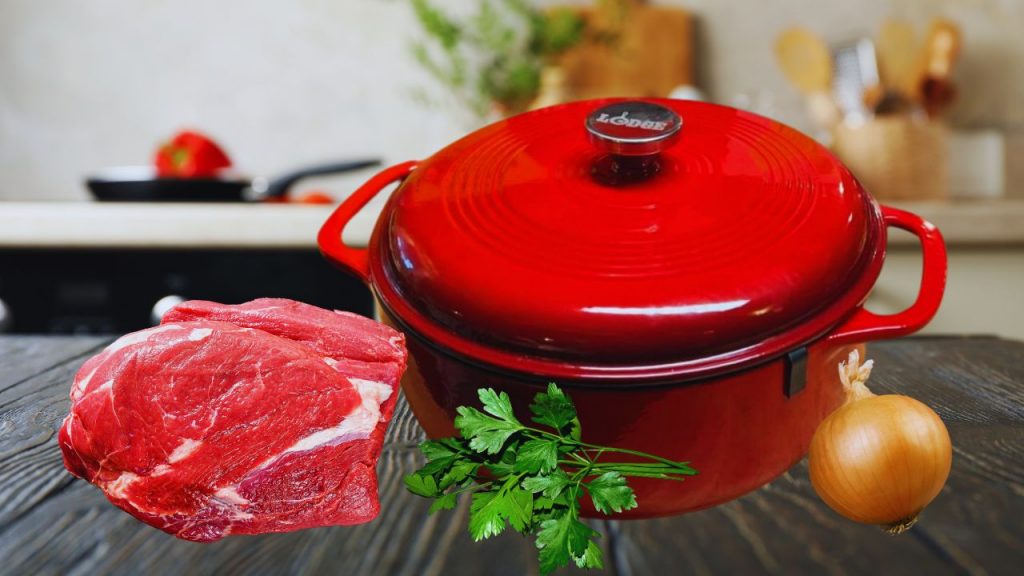
The key to a stellar pot roast lies in choosing the right cut of meat. Opt for tougher cuts such as chuck roast, brisket, or bottom round. These cuts have a higher collagen content, which breaks down during the slow cooking process, imparting rich flavor and tenderness to the dish. The marbling in these cuts also contributes to the overall succulence of the roast.
Tips on Cooking Pot Roast in a Dutch Oven
Use a Heavy Duty Cast Iron Dutch Oven
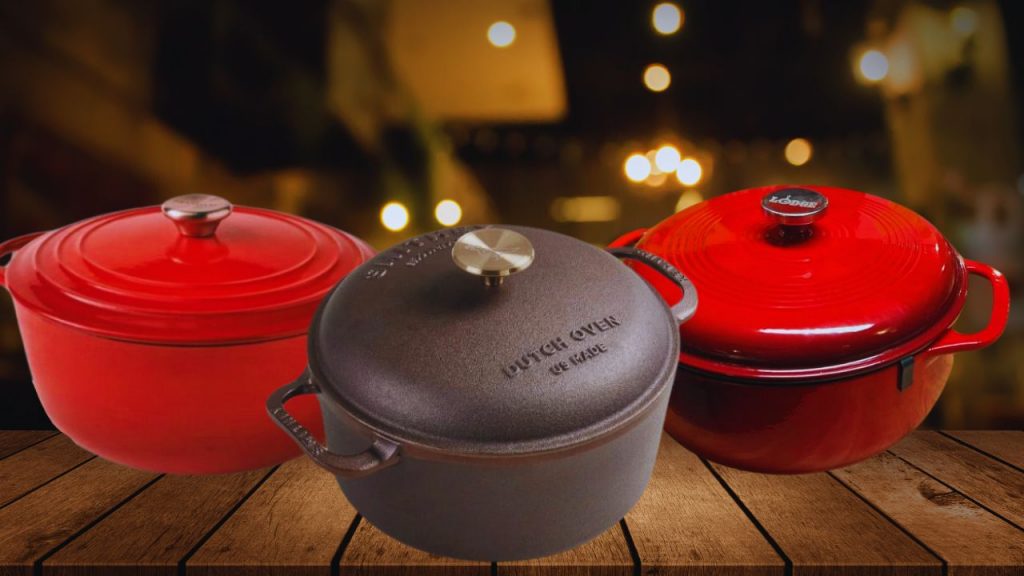
For an impeccable Dutch oven pot roast, use a sturdy cast-iron Dutch oven with a secure lid. I favor a heavy-duty option like the one I use, although a high-quality oven-safe pot with a tight-fitting lid can also do the job. Note that merely covering your meat with aluminum foil won’t deliver the desired results.
Sear the Meat
Start the recipe by searing your meat over high heat. This initial searing step is crucial for kickstarting the browning process. It infuses your pot roast with the kind of flavor that truly satisfies the taste buds.
Don’t Rush Searing
Take your time with the searing and browning of the meat and onions; rushing this process is not advised. Allow them to brown gradually, and you’ll notice the formation of rich brown bits. When these bits are deglazed, they release fantastic flavors, enhancing the overall taste of your dish.
Add Vegetables Last
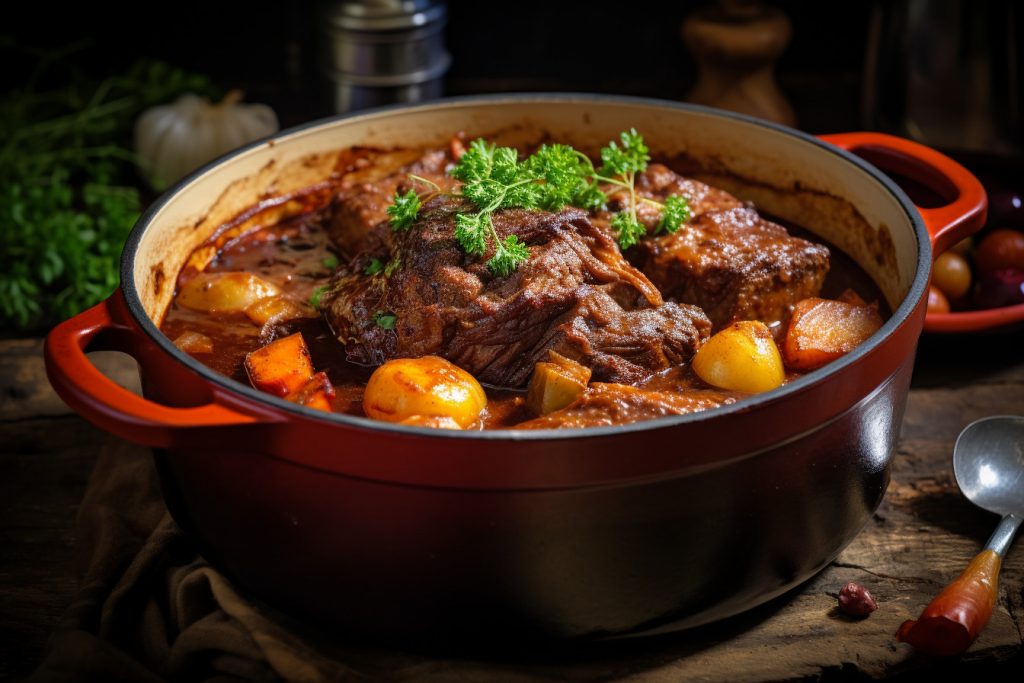
Consider adding carrots and potatoes to the pot during the final 45 minutes to an hour of cooking. This strategic timing allows these vegetables to absorb the savory broth and attain a delightful softness, rounding out the dish with a medley of textures.
Use Beef Broth or Red Wine
When it comes to the liquid component, you have options. Water alone can work wonders, producing delectable beef broth as the roast simmers. You can also opt for beef broth for an added depth of flavor.
I suggest choosing a broth without MSG, additives, or flavorings. It is best to avoid bouillon cubes or powders. They can be too salty for your roast.
You can also use red wine as an alternative. This will enhance the flavors significantly. I suggest using Cabernet Sauvignon or Pinot Noir.
How to Store Leftover Pot Roast?
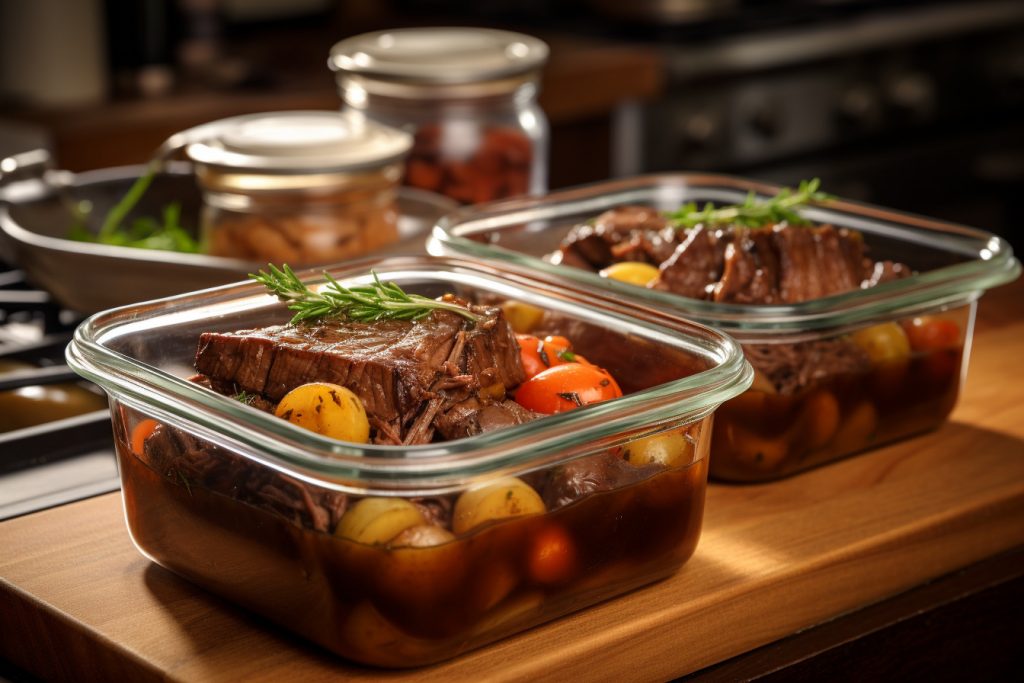
Let the remaining roast to cool to room temperature. Divide the leftovers into airtight containers. I recommend separating the meat from the vegetables and broth to maintain their individual textures and flavors.
For extended freshness, refrigerate the leftovers promptly, and they can be safely enjoyed for up to three to five days. To reheat, simply warm the portions gently on the stove or in the microwave.
Conclusion
As a chef with a decade of experience, I’ve witnessed the magic that unfolds when quality ingredients meet the perfect cooking vessel. The slow-cooked symphony of tough cuts of meat, aromatic vegetables, and flavorful liquids creates a masterpiece that entices the taste buds and warms the soul.
I hope the tips above help you in making your pot roast. Savor the process, enjoy the aromas that fill your kitchen, and relish the joy of creating a dish that brings people together. Happy cooking!
Ensure you don’t pass up the chance to check out the list of top-5 Dutch ovens.

